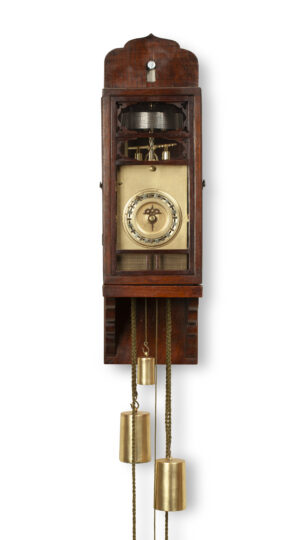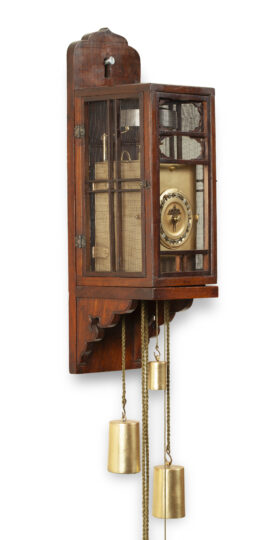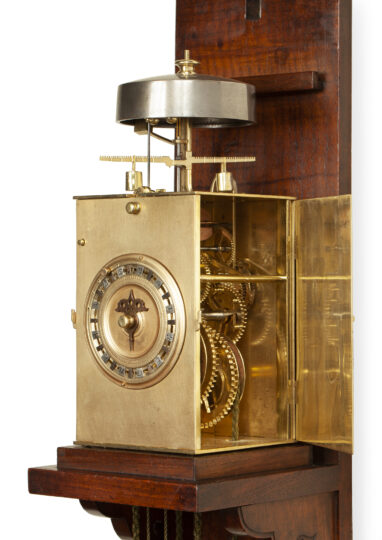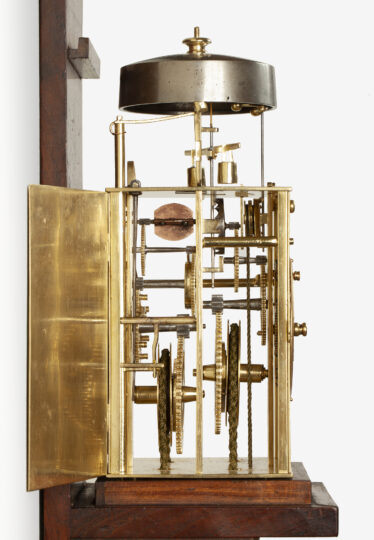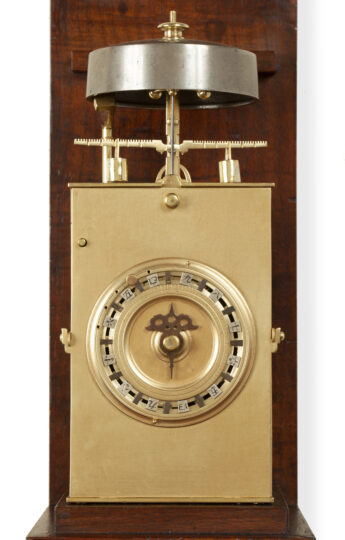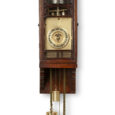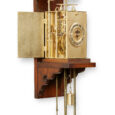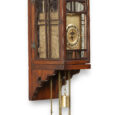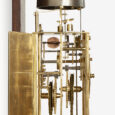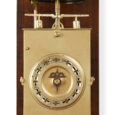Japanese wallclock HASHIRA-DOKEI Ca. 1830
M&R142
HASHIRA-DOKEI
Circa 1830
Japan
Movement
The weight-driven movement consists of going and striking trains. The going train has a verge escapement with foliot. The striking mechanism with countwheel regulation indicates the hours fully from 9x decreasing to 4x on a bell. The half hours are struck alternately once or twice. The movement also has an alarm.
Dial
The dial has silver adjustable plates in a rotating chapter ring. These are provided with the Chinese zodiac signs or Japanese numbers. In the centre is a fixed, beautifully pierced blued steel hand.
Case
The brass movement case has doors on both sides. The foliot is located on the movement case. It has notches and two weights, which can be moved to regulate the movement. The whole is surmounted by a pork-pie bell. The movement is situated in a Japanese wooden case. The sides have panels which are covered with mesh to propagate the sound of the bell.
Duration: 4 days
Height: 42 cm.
Width: 12 cm.
Depth: 13.5 cm.
Literature
– A similar type of clock is depicted in Bonhams, ‘The John Read Collection of Fine Antique Japanese Timekeepers’, page 75.
– N.H.N. Mody, Japanese clocks.
– W. Brandes, Alte Japanische Uhren.
Japanese timekeeping
Japanese timekeeping differs greatly from Western timekeeping. Instead of taking an hour as a fixed value, in Japan the length of an hour, called toki, differs according to the length of the day and night. The day and night are both divided into six toki, which are counted from sunrise to sunset and from sunset to sunrise. In summer the days are longer than the nights and therefore a toki lasts longer during the day than at night. In winter this works the other way around. For this reason, there are Japanese clocks with sliding chapters, so that the length of the toki can be changed. There are also clocks where the chapter ring is fixed, but where the beats of the clock can be changed by moving the weights of the foliot, so that the clock runs slower or faster. This occurs with older clocks. The numerals of the clock run from 9 to 4. The only number that is ‘fixed’ is 9 o’clock, our noon time 12 o’clock. Japanese clocks indicate how many hours remain in the future (after the 5 comes the 4), European clocks indicate how many hours have already passed (after the 5 comes the 6). In Japan the number 9 was sacred. Each toki, 12 in total, also had its own sign of the zodiac, which were also depicted on a chapter ring around the regular chapter ring.

